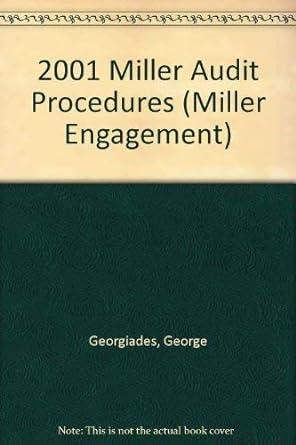Question
RSU has four academic colleges: Agriculture (CA), Business and Technology (CBT), Engineering (CE) and Sciences and Humanities (CSH). During the 2014-15 school year, the president
RSU has four academic colleges: Agriculture (CA), Business and Technology (CBT), Engineering (CE) and Sciences and Humanities (CSH). During the 2014-15 school year, the president went to these colleges to discuss the budget and the cost of operations. When he attended the College of Business and Technology, he made it clear that he believed the college was very expensive to run. In fact, he said, The College of Business and Technology was being subsidized by the College of Sciences and Humanities, which was not fair to them.
Table 1 presents the prior-years budgets, along with the student credit hours (SCH) and the number of majors (MAJORS) in each college. The president decided that each college would receive 80 percent of its revenues based on SCH and 20 percent based on MAJORS. Additionally, he decided that administrative and overhead costs would be assigned as a revenue tax, or as a percentage of revenues. The revenue tax was determined to be 52 percent of revenues, or $104,000,000 in costs divided by $200,000,000 in revenues. The Revenue Ratio for the College of Agriculture was found by (80% x 25.0%) + (20% x 19.0%), or it is 23.8%. The Revenue Ratios for the other colleges can be calculated in a similar manner.
In this case, we use the 80/20 allocation for revenues.
| Table 1 Prior Period Budgets, Student Credit Hours, Number of Majors and Revenue Ratio (Budgets are in millions) | ||||
| Prior Year Budgets | SCH (80%) | Majors (20%) | Revenue Ratio | |
| CA | 23.00 | 150,000 (25.0%)* | 3,230 (19.0%) ** | 23.8% |
| CBT | 14.00 | 66,000 (11.0%) | 3,060 (18.0%) | 12.4% |
| CE | 26.00 | 159,000 (26.5%) | 5,440 (32.0%) | 27.6% |
| CSH | 33.00 | 225,000 (37.5%) | 5,270 (31.0%) | 36.2% |
| Total | 96.00 | 600,000 | 17,000 | 100.0% |
| * The SCH percentages are found by taking the colleges SCH and dividing it by the total SCH for the university. For the College of Agriculture, 150,000/600,000 equals 25.0%. The SCH percentages for the other three colleges are found in a similar manner. **The MAJORS percentages are found by taking the number of majors in the college and divided by the total number of majors at the university. For the College of Agriculture, 3,230/17,000 equals 19.0%. The MAJORS percentages for the other three colleges are found in a similar manner. | ||||
| Table 2 Simple Calculation of RCM Budget and Comparison to Prior Years Budget for the College of Agriculture (in millions) | |
| Total Tuition | 200.00 |
| Revenue Ratio from Table 1 | 23.80% |
| Allocated Revenues | 47.60 |
| Allocated Administrative Costs (52% of Revenues) | 24.75 |
| RCM Budget | 22.85 |
| Prior Year Budget from Table 1 | 23.00 |
| Difference | (0.15) |
Table 2 shows the calculations for the RCM budget for the College of Agriculture. Additionally, it is compared to the prior years budget to determine the difference. Based on the calculation in Table 2, the RCM budget would be $22.85 million for the College of Agriculture and the difference is $0.15 million less than the prior years budget.
Table 3 summarizes the RCM budgets, prior years budgets and differences. The RCM budgets for the College of Business and Technology, College of Engineering and College of Sciences and Humanities would be found in a similar fashion using Table 2.
| Table 3 RCM Budget Comparisons (in millions) | |||
| College | RCM Budget | Prior Years Budget | Difference |
| CA | 22.85 | 23.00 | (0.15) |
| CBT | 11.90 | 14.00 | (2.10) |
| CE | 26.50 | 26.00 | 0.50 |
| CSH | 34.75 | 33.00 | 1.75 |
| Total | 96.00 | 96.00 |
|
Dean Sanders approached Gordon Moffitt, the Vice-President of Finance, and asked him to provide her with the budgeted costs associated with each of the four activity drivers in Table 4. Besides that, Gordon provided her with activity driver data per college in Table 5.
| Table 4 Budgeted Costs (in millions) and Activity Drivers | ||
| Type of Costs | Budgeted Costs | Potential Driver |
| Facilities | 24.00 | Square Footage |
| Human Resources | 5.30 | # of Employees |
| Graduate Studies | 2.70 | # of Graduate Students |
| Other Administrative Costs | 72.00 | Revenue Tax |
| Total | 104.00 | |
| Table 5 Activity Driver Data per College | |||
| College | Square Footage | # of Employees | # of Graduate Students |
| CA | 120,000 | 186 | 94 |
| CBT | 40,000 | 72 | 0 |
| CE | 210,000 | 258 | 456 |
| CSH | 430,000 | 284 | 350 |
| Total | 800,000 | 800 | 900 |
Requirement:
3. Calculate the new RCM budgets for each college assuming that activity-based costing is being used. (LO 3)
Step by Step Solution
There are 3 Steps involved in it
Step: 1

Get Instant Access to Expert-Tailored Solutions
See step-by-step solutions with expert insights and AI powered tools for academic success
Step: 2

Step: 3

Ace Your Homework with AI
Get the answers you need in no time with our AI-driven, step-by-step assistance
Get Started


